Finding good dog food for labs doesn’t have to be overwhelming when you understand what makes nutrition truly beneficial for these beloved companions. Labrador Retrievers share many dietary characteristics with Golden Retrievers, making it easier for pet parents to identify quality food options that support both breeds’ health and vitality. This comprehensive guide explores everything you need to know about selecting the best food for labs that promotes optimal health, energy, and longevity.
Contents
- 1 What Makes Dog Food “Good” for Labradors?
- 2 Understanding Labrador Nutritional Requirements.
- 3 Commercial vs. Homemade Good Food Options.
- 4 Identifying Good Food Brands and Products.
- 5 Age-Specific Good Food Requirements.
- 6 Activity-Based Nutritional Adjustments.
- 7 Common Health Issues and Dietary Solutions.
- 8 Ingredient Analysis and Selection.
- 9 Feeding Guidelines and Best Practices.
- 10 Foods to Avoid and Toxic Considerations.
- 11 Professional Guidance and Veterinary Input.
- 12 Cost Considerations and Value Assessment.
- 12.1 Understanding Food Value.
- 12.2 Budget-Friendly Quality Options.
- 12.3 What makes dog food “good” for Labradors specifically?
- 12.4 How do I know if my Lab’s current food is good quality?
- 12.5 Can Labs and Golden Retrievers eat the same good food?
- 12.6 What’s the difference between good and best dog food for Labs?
- 12.7 How much good dog food should I feed my Labrador daily?
- 12.8 What ingredients should I avoid in good dog food for Labs?
- 12.9 Is grain-free food automatically good for Labs?
- 12.10 How often should I change my Lab’s food brand?
- 12.11 What’s the best way to transition to a new, good dog food?
- 12.12 Can puppies and adult Labs eat the same good food?
- 13 Final Thoughts.
What Makes Dog Food “Good” for Labradors?
Defining Quality in Canine Nutrition
Good dog food for labradors goes beyond basic nutritional requirements to address breed-specific needs, life stage considerations, and individual health factors. Quality nutrition forms the foundation of your Lab’s overall well-being, influencing everything from coat shine to joint health and energy levels.
Unlike generic pet foods, good food for labs considers the unique characteristics of this active, intelligent breed. Labradors are known for their hearty appetites, high energy levels, and predisposition to certain health conditions that proper nutrition can help manage or prevent.
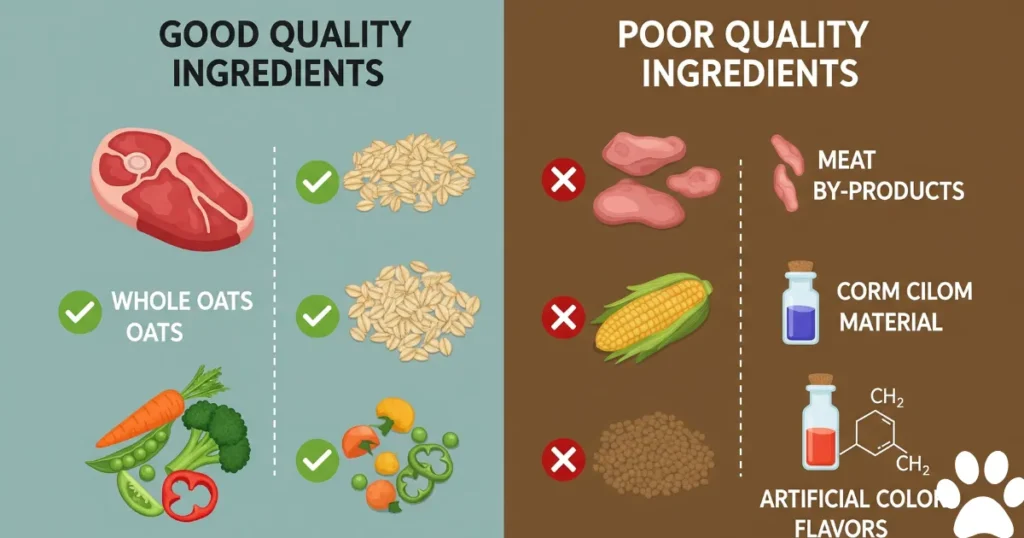
Key Indicators of Good Dog Food
Real Meat as Primary Ingredient
The hallmark of good dog food for labs is having a named meat source as the first ingredient. Whether it’s chicken, salmon, lamb, or beef, real meat provides the complete amino acid profile that Labs need for muscle maintenance and energy production.
Balanced Macronutrient Profile
Quality Lab foods contain:
- Protein: 20-28% (varies by life stage).
- Fat: 10-16% (adjusted for activity level).
- Carbohydrates: Complex sources for sustained energy.
- Fiber: 3-5% for digestive health.
No Harmful Additives.
Good dog food for labradors avoids artificial colors, flavors, and chemical preservatives like BHA, BHT, and ethoxyquin. Instead, it uses natural preservatives like mixed tocopherols (vitamin E) and rosemary extract.
Understanding Labrador Nutritional Requirements.
Breed-Specific Dietary Needs.
Labradors have evolved as working dogs with high energy demands and robust digestive systems. Good food for labs acknowledges their genetic background while addressing modern lifestyle needs. These dogs share many nutritional similarities with Golden Retrievers, including requirements for joint support and coat health maintenance.
Energy Requirements.
Active Labs require 1,200-1,800 calories daily, depending on size, age, and activity level. Good dog food for labs provides sustained energy through balanced nutrition rather than empty calories from fillers.
Digestive Considerations.
Labs have generally robust digestive systems but can be prone to food sensitivities. Quality foods include probiotics and prebiotics to support digestive health and nutrient absorption.
Life Stage Nutritional Variations.
Puppy Nutrition Foundation.
Good dog food for labradors during puppyhood contains higher protein (28-32%) and fat (15-20%) to support rapid growth. Calcium and phosphorus levels must be carefully balanced to prevent developmental orthopedic diseases common in large breeds.
Adult Maintenance Nutrition.
Adult Labs benefit from good food for labs that maintains muscle mass while preventing excess weight gain. This typically means moderate protein levels (22-26%) with controlled fat content (12-16%).
Senior Support Nutrition.
Older Labs need easily digestible, good dog food for labs with joint-supporting ingredients like glucosamine and chondroitin. Antioxidants become increasingly important for cognitive health and immune system support.
Commercial vs. Homemade Good Food Options.
Advantages of High-Quality Commercial Foods.
Nutritional Consistency.
Reputable manufacturers ensure that best food for labradors meets AAFCO standards and provides consistent nutrition batch after batch. This reliability removes guesswork from feeding and ensures complete nutrition.
Convenience Factor.
Commercial good food for labs offers convenience without sacrificing quality. Premium brands undergo rigorous testing and quality control measures that would be difficult to replicate at home.
Specialized Formulations.
Many manufacturers create breed-specific or size-specific formulas that address the unique needs of Labs and similar breeds like Golden Retrievers.
Homemade Food Considerations.
Complete Nutrition Challenges.
Creating good dog food for labs at home requires extensive knowledge of canine nutrition. Many well-intentioned homemade diets lack essential nutrients or contain inappropriate ratios of vitamins and minerals.
Professional Guidance Required.
Veterinary nutritionists can help design balanced homemade diets that qualify as good food for labs. This professional input is essential to avoid nutritional deficiencies or excesses.
Time and Cost Factors.
Preparing nutritionally complete homemade meals requires significant time investment and can be more expensive than high-quality commercial alternatives.
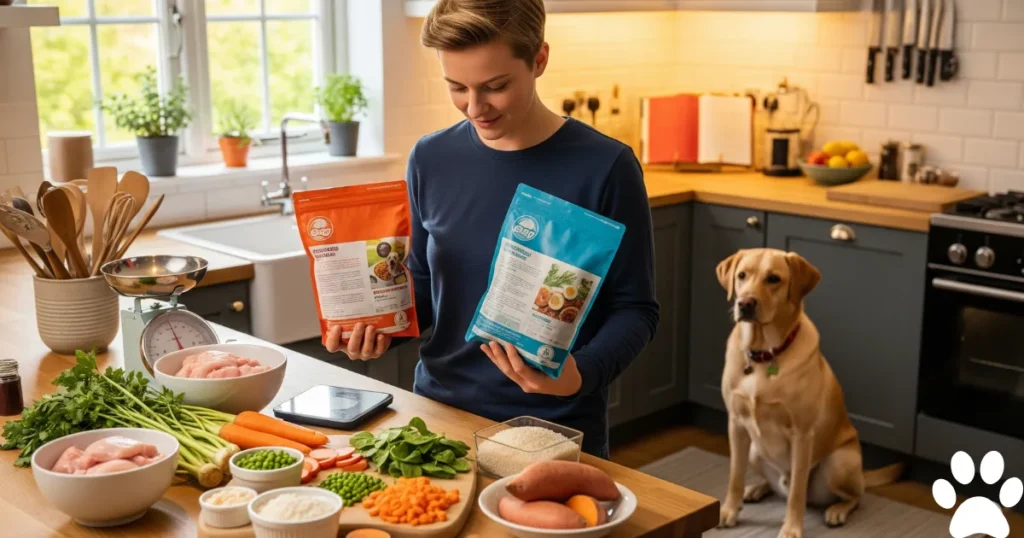
Identifying Good Food Brands and Products.
Premium Brand Characteristics.
Transparent Ingredient Lists.
Good dog food for labradors comes from manufacturers who clearly list all ingredients and their sources. Transparency in sourcing and manufacturing processes indicates quality commitment.
Research-Backed Formulations.
Quality brands invest in nutritional research and feeding trials to ensure their good food for labs actually benefits dogs’ health and wellbeing.
Quality Control Standards.
Reputable manufacturers implement strict quality control measures, including ingredient testing, facility inspections, and batch tracking systems.
Recommended Quality Brands.
Hill’s Science Diet.
Known for scientifically formulated good dog food for labs, Hill’s offers life stage and breed-specific options backed by extensive research and veterinary recommendations.
Royal Canin.
Specializes in breed-specific nutrition with formulas designed specifically for Labs. Their good dog food for labradors addresses common breed health concerns.
Blue Buffalo.
Offers natural, good food for labs with real meat, wholesome grains, and antioxidant-rich ingredients. Their LifeSource Bits provide additional nutritional benefits.
Purina Pro Plan.
Provides scientifically advanced, good dog food for labs with probiotics for digestive health and DHA for brain development in puppies.
Wellness Core.
Focuses on protein-rich, grain-free options that many consider excellent and good food for labs, especially for dogs with grain sensitivities.
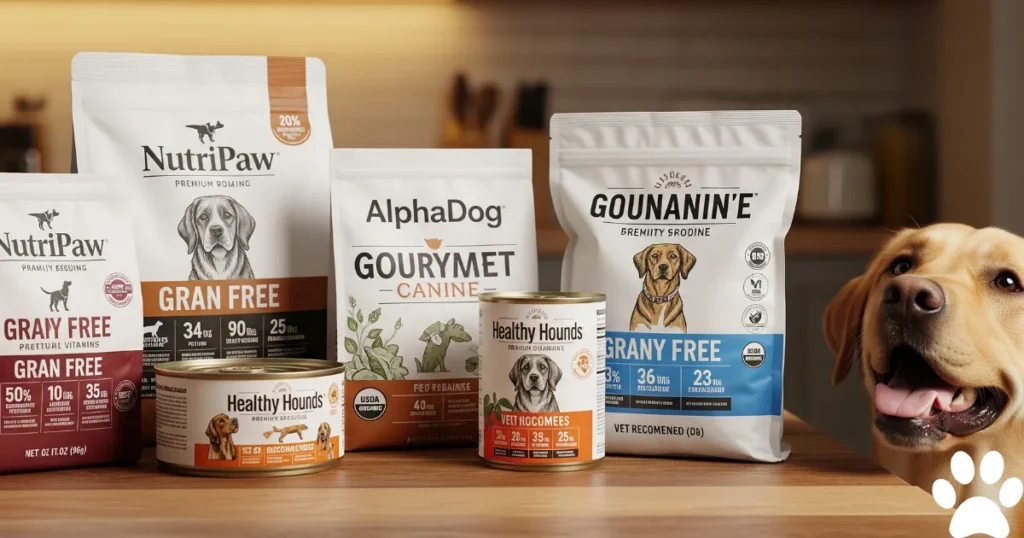
Age-Specific Good Food Requirements.
Puppy Development Needs (2-18 months).
Growth Support Nutrition.
Good dog food for labradors during puppyhood must support proper bone and muscle development. This requires higher protein levels and carefully balanced minerals to prevent developmental issues.
Feeding Frequency Guidelines.
Puppies need frequent meals to support growth and maintain stable blood sugar levels.
- 8-16 weeks: 4 meals daily.
- 16-24 weeks: 3 meals daily.
- 6-12 months: 2-3 meals daily.
Transition to Adult Food.
Gradual transition from puppy to adult, good food for labs should begin around 12-15 months for Labs, coinciding with their growth rate slowing.
Adult Maintenance (18 months – 7 years).
Balanced Nutrition Focus.
Adult Labs thrive on good dog food for labs that maintains ideal body condition while supporting active lifestyles. This phase emphasizes consistency and quality over high-calorie growth formulas.
Weight Management Importance.
Many Labs are prone to weight gain, making portion control and quality nutrition crucial. Good food for labs helps maintain lean body mass while preventing obesity.
Activity-Based Adjustments.
Working Labs or those involved in dog sports may need higher-calorie, good dog food for Labrador Retrievers to support their increased energy expenditure.
Senior Care Nutrition (7+ years).
Joint Health Support.
Senior Labs benefit from good food for labs containing glucosamine, chondroitin, and omega-3 fatty acids to support aging joints and maintain mobility.
Digestive Support.
Older dogs may need more digestible, good dog food for labradors with added probiotics and easily absorbed nutrients to compensate for decreased digestive efficiency.
Cognitive Health Considerations.
Antioxidants and omega-3 fatty acids in good food for labs can help support brain health and potentially slow cognitive decline in senior dogs.
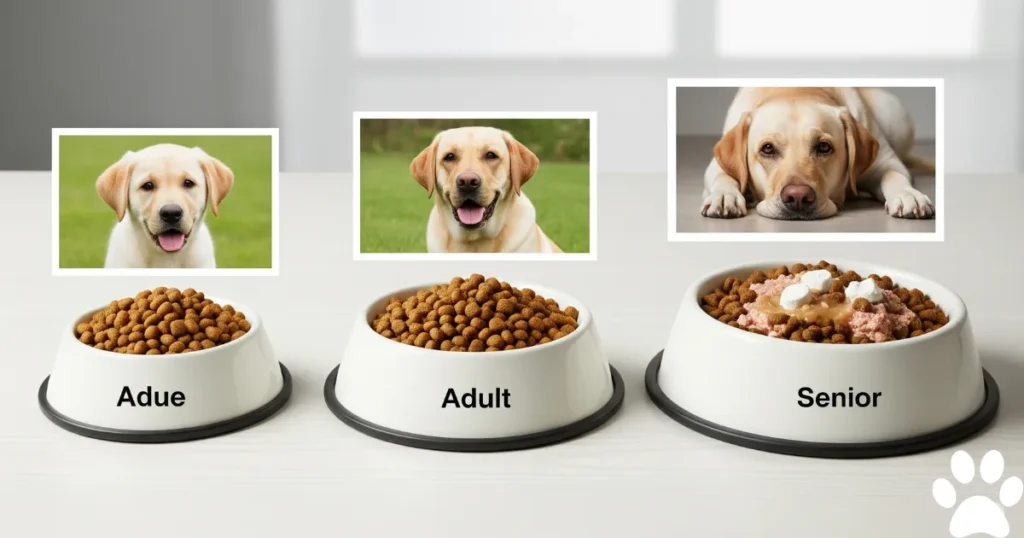
Activity-Based Nutritional Adjustments.
High-Energy Working Labs.
Performance Nutrition Requirements.
Labs involved in hunting, search and rescue, or competitive sports need good dog food for labs with higher protein (26-32%) and fat (16-20%) content to fuel their activities.
Recovery Nutrition.
Post-exercise nutrition is crucial for working Labs. Good food for labradors should support muscle recovery and glycogen replenishment.
Hydration Considerations.
Active Labs need constant access to fresh water, and their food should support proper hydration levels.
Moderate Activity Companions.
Balanced Energy Support.
Most family Labs fall into this category, needing good dog food and dry food for labs that supports daily walks, play sessions, and moderate exercise without excess calories.
Seasonal Adjustments.
Labs may need slight caloric adjustments based on seasonal activity changes, with good food for labs portions modified accordingly.
Less Active or Senior Labs.
Calorie Control Focus.
Sedentary Labs require carefully portioned good dog food for labradors to prevent weight gain while maintaining muscle mass and overall health.
Nutrient Density Priority.
Lower-calorie, good food for labs should still provide complete nutrition through nutrient-dense ingredients rather than simply reducing portion sizes.
Common Health Issues and Dietary Solutions.
Hip and Elbow Dysplasia Prevention.
Joint-Supporting Ingredients.
Good dog food for labs often includes glucosamine and chondroitin sulfate to support cartilage health and potentially reduce the risk of joint problems.
Weight Management Connection.
Maintaining optimal weight through appropriate good food for labradors reduces stress on joints and may delay the onset of orthopedic issues.
Eye Health Considerations.
Antioxidant Support.
Labs can be prone to eye conditions like progressive retinal atrophy. Good dog food for labs with antioxidants like vitamin E and beta-carotene may support eye health.
Omega-3 Benefits.
DHA and EPA from fish oil in good food for labs support retinal health and overall eye function.
Heart Health Support.
Taurine and L-Carnitine.
Some good dog food for labradors includes these amino acids to support cardiovascular health, especially important given recent concerns about grain-free diets and heart disease.
Controlled Sodium Levels.
Quality good food for labs maintains appropriate sodium levels to support heart health without compromising palatability.
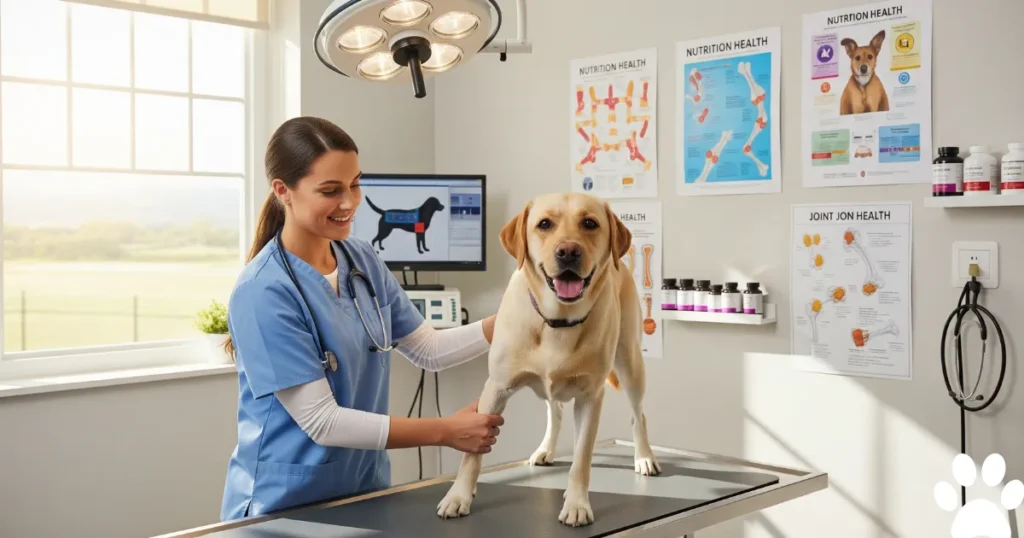
Ingredient Analysis and Selection.
Protein Sources Evaluation.
Animal vs. Plant Proteins.
Good dog food for labs prioritizes high-quality animal proteins that provide complete amino acid profiles. While plant proteins can supplement, they shouldn’t be the primary source.
Novel Protein Options.
For Labs with food sensitivities, good dog food for labradors may feature novel proteins like duck, venison, or fish to reduce allergic reactions.
Carbohydrate Quality Assessment.
Complex vs. Simple Carbs.
Good food for labs emphasizes complex carbohydrates like sweet potatoes, brown rice, and oats that provide sustained energy rather than blood sugar spikes.
Grain-Free Considerations.
While not necessary for all Labs, some may benefit from grain-free good dog food for labs if they have specific grain sensitivities.
Fat Source Importance.
Omega Fatty Acid Balance.
Good food for labradors includes appropriate ratios of omega-3 and omega-6 fatty acids for skin health, coat shine, and anti-inflammatory effects.
Quality Fat Sources.
Chicken fat, fish oil, and flaxseed are examples of quality fat sources found in good dog food for labs.
Feeding Guidelines and Best Practices.
Portion Control Strategies.
Body Condition Scoring.
Regular assessment of your Lab’s body condition helps determine if their good food for labs portions are appropriate for maintaining ideal weight.
Meal Timing Consistency.
Feeding good dog food for labradors at consistent times helps regulate digestion and prevents behavioral issues related to food anxiety.
Food Transition Protocols.
Gradual Change Process.
When switching to new good food for labs, use a 7-10 day transition period to avoid digestive upset:
- Days 1-3: 75% old food, 25% new food.
- Days 4-6: 50% old food, 50% new food.
- Days 7-10: 25% old food, 75% new food.
Monitoring During Transitions.
Watch for signs of digestive upset or allergic reactions when introducing new good dog food for labs.
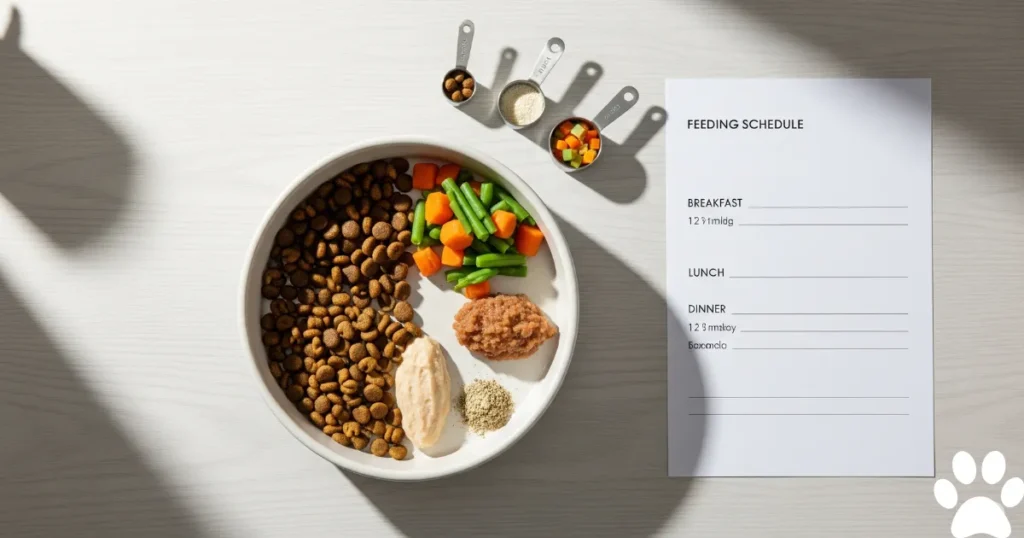
Storage and Safety Practices.
Proper Food Storage.
Keep good food for labradors in airtight containers in cool, dry locations to maintain freshness and prevent pest contamination.
Expiration Date Monitoring.
Regularly check expiration dates on good dog food for labs to ensure nutritional quality and safety.
Foods to Avoid and Toxic Considerations.
Dangerous Human Foods.
Immediate Toxins.
Never feed Labs chocolate, grapes, raisins, onions, garlic, or xylitol-containing products, regardless of how “good” other ingredients might be.
Problematic Ingredients.
Avoid good dog food for labs containing excessive salt, sugar, or artificial additives that can cause health issues over time.
Poor Quality Food Indicators.
Filler Ingredients.
Good food for labradors doesn’t rely on corn, wheat, or soy as primary ingredients, as these provide limited nutritional value for Labs.
Generic Meat Sources.
Avoid foods listing “meat meal” or “by-product meal” without specifying the animal source.
Professional Guidance and Veterinary Input.
When to Consult Your Veterinarian.
Regular Nutrition Discussions.
Annual veterinary visits should include discussions about whether your current good dog food for labs continues to meet your pet’s changing needs.
Health Issue Dietary Management.
Certain health conditions may require specialized recommended food for labradors or prescription diets prescribed by veterinary professionals.
Working with Veterinary Nutritionists.
Specialized Dietary Planning.
For Labs with complex health issues or specific dietary needs, veterinary nutritionists can recommend or design appropriate good dog food for labs.
Homemade Diet Guidance.
If choosing homemade feeding, veterinary nutritionists ensure recipes provide complete nutrition equivalent to commercial good food for labs.
Cost Considerations and Value Assessment.
Understanding Food Value.
Price vs. Quality Balance.
More expensive doesn’t always mean better, but good dog food for labs typically costs more than generic brands due to quality ingredients and research investment.
Cost Per Feeding Analysis.
Calculate the actual cost per feeding of good food for labradors rather than just the bag price to understand the true value.
Budget-Friendly Quality Options.
Value Brand Recommendations.
Several manufacturers offer good dog food for labs at moderate prices without compromising essential nutrition quality.
Bulk Purchasing Benefits.
Buying larger bags of good food for labs often reduces per-pound costs, but ensure that freshness won’t be compromised.
What makes dog food “good” for Labradors specifically?
Good dog food for labs contains high-quality protein as the first ingredient, balanced nutrition for their size and activity level, and ingredients that support joint health. It should be formulated for large breeds and free from harmful additives or excessive fillers.
How do I know if my Lab’s current food is good quality?
Check the ingredient list – good food for labs lists a specific meat source first, contains recognizable ingredients, and meets AAFCO standards. Your Lab should have a shiny coat, healthy weight, good energy levels, and normal digestion on quality food.
Can Labs and Golden Retrievers eat the same good food?
Yes, Labs and Golden Retrievers have similar nutritional needs, so good dog food for labradors is typically excellent for both breeds. Both are large, active breeds that benefit from joint support and controlled calories.
What’s the difference between good and best dog food for Labs?
Good dog food for labs meets basic quality standards with real meat and balanced nutrition. In contrast, the best options may include premium ingredients, breed-specific formulations, and additional health benefits like probiotics or specialized supplements.
How much good dog food should I feed my Labrador daily?
Most adult Labs need 2.5-4 cups of good food for labs daily, divided into two meals. The exact amount depends on your dog’s age, weight, activity level, and the specific food’s calorie content. Always follow feeding guidelines and adjust based on body condition.
What ingredients should I avoid in good dog food for Labs?
Avoid good dog food for labradors containing meat by-products, artificial colors and preservatives, excessive corn or wheat fillers, and generic “meat meal” without species identification. Also, avoid foods with added sugars or excessive salt.
Is grain-free food automatically good for Labs?
Not necessarily. While some Labs benefit from grain-free options due to sensitivities, many do well with good food for labs containing whole grains. Recent research suggests grain-free diets may be linked to heart issues in some dogs.
How often should I change my Lab’s food brand?
Don’t change frequently unless necessary. Good dog food for labs should provide consistent nutrition. Only change if your current food is discontinued, your dog develops health issues, or your veterinarian recommends a switch.
What’s the best way to transition to a new, good dog food?
Transition gradually over 7-10 days by mixing increasing amounts of new, good food for labradors with decreasing amounts of the old food. This prevents digestive upset and allows your Lab’s system to adjust.
Can puppies and adult Labs eat the same good food?
No, puppies need good dog food for labs specifically formulated for growth with higher protein and fat levels. Adult formulations don’t provide adequate nutrition for developing puppies.
Final Thoughts.
Selecting good dog food for labs is one of the most important decisions you’ll make for your Labrador’s health and well-being. Quality nutrition serves as the foundation for everything from proper growth and development to long-term health and vitality. By understanding your Lab’s specific needs, recognising quality ingredients, and choosing reputable brands, you can ensure your furry companion receives the nutrition they deserve.
Remember that good food for labradors isn’t just about meeting basic nutritional requirements– it’s about providing optimal nutrition that supports your dog’s unique needs throughout every life stage. Whether you’re feeding a growing puppy, an active adult, or a senior companion, the principles of quality nutrition remain constant: real meat proteins, balanced macronutrients, and ingredients that support overall health.
The investment in good dog food for labs pays dividends in your pet’s health, energy, and longevity. While premium foods may cost more initially, they often provide better value through improved digestibility, reduced feeding amounts, and potentially lower veterinary costs due to better overall health.
As you navigate the world of canine nutrition, remember that what works best for one Lab may not be perfect for another. Monitor your dog’s response to their food, maintain regular veterinary check-ups, and be prepared to adjust their nutrition as their needs change over time. With patience, observation, and commitment to quality, you can provide your Labrador with the good food they need to thrive throughout their entire life.
Featured Blogs

Recommended Puppy Food for Labs: The Ultimate Guide to Raising Healthy Labrador Puppies
Selecting the recommended puppy food for labs is one of the most crucial decisions new pet parents make for their...

Best Food for Labrador Retriever: Complete Nutrition Guide for Healthy, Happy Labs
Choosing the best food for labrador retriever companions requires understanding their unique nutritional needs, energy requirements, and health considerations. Labrador...
Dr. Nabeel A.
Hi, I’m Dr. Nabeel Akram – a farm management professional by trade and a passionate Golden Retriever enthusiast at heart. With years of experience in animal science and livestock care, I’ve built a career around understanding animals—how they live, thrive, and bring value to our lives. This blog is a personal project born from that same passion, focusing on one of the most loyal and lovable breeds out there: the Golden Retriever. Whether I’m managing farm operations or sharing insights on canine health, behavior, and care, it all ties back to one core belief—animals deserve thoughtful, informed, and compassionate attention. Welcome to a space where professional expertise meets genuine love for dogs.
Facebook |
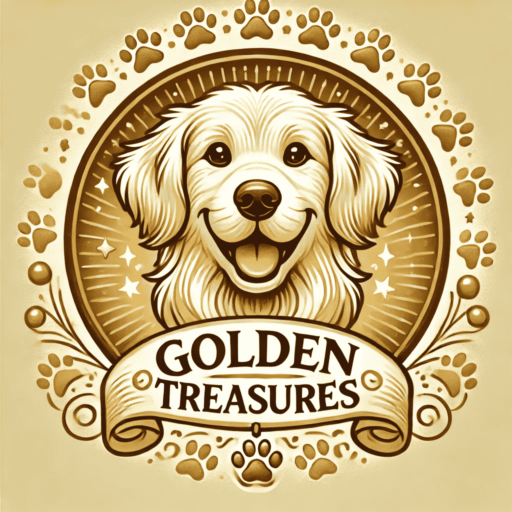
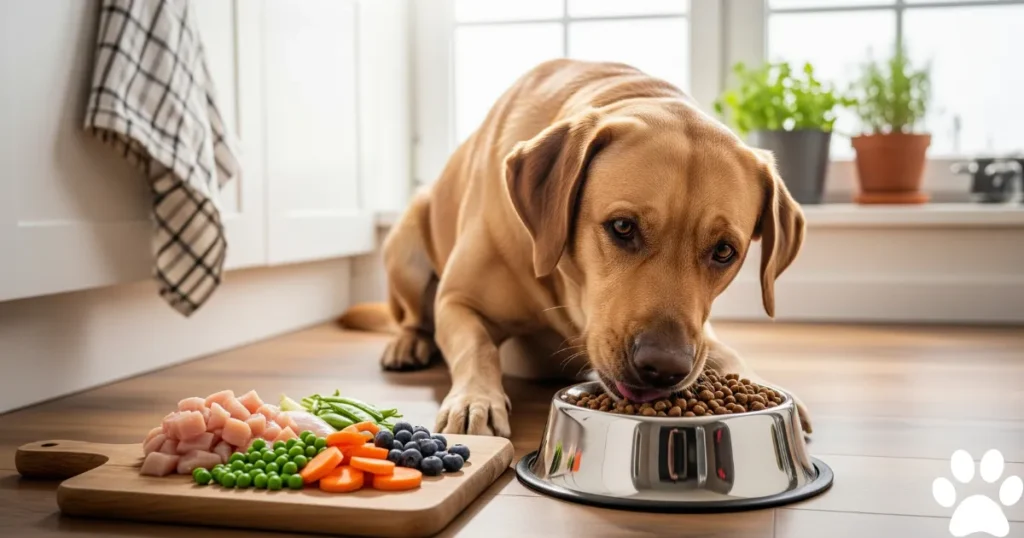
Links will be automatically removed from comments.